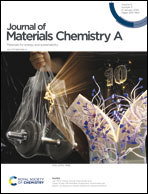Advances in the structural engineering and commercialization processes of hard carbon for sodium-ion batteries
Abstract
With abundant reserves, safe properties, and a superior electrochemical rate, sodium-ion batteries (SIBs) are expected to be widely used in large-scale energy storage applications. Searching for a cost-effective, long cycle life, and high-capacity sodium storage electrode material is the key to realizing the large-scale applications of SIBs. Among most anode materials, hard carbon (HC) has attracted much attention because of its unique advantages. However, the insufficient initial coulombic efficiency (ICE) and poor rate performance hinder the wide application of hard carbon in SIBs. This review introduces the Na-storage mechanism of hard carbon in detail and provides an overview of the latest progress in the electrochemical improvement of hard carbon with regards to defects, pores, surface engineering, and other aspects. Beginning with the relationship between the microstructure of hard carbon and electrochemical performance, the advantages and disadvantages of each optimization strategy are elaborated, and the direction of further performance improvement is provided. Finally, we look forward to the future of the energy storage industry of hard carbon for SIBs. We believe that hard carbon as anode materials with satisfying electrochemical performance will be developed and manufactured for large-scale energy storage applications.

- This article is part of the themed collection: Journal of Materials Chemistry A Recent Review Articles


 Please wait while we load your content...
Please wait while we load your content...